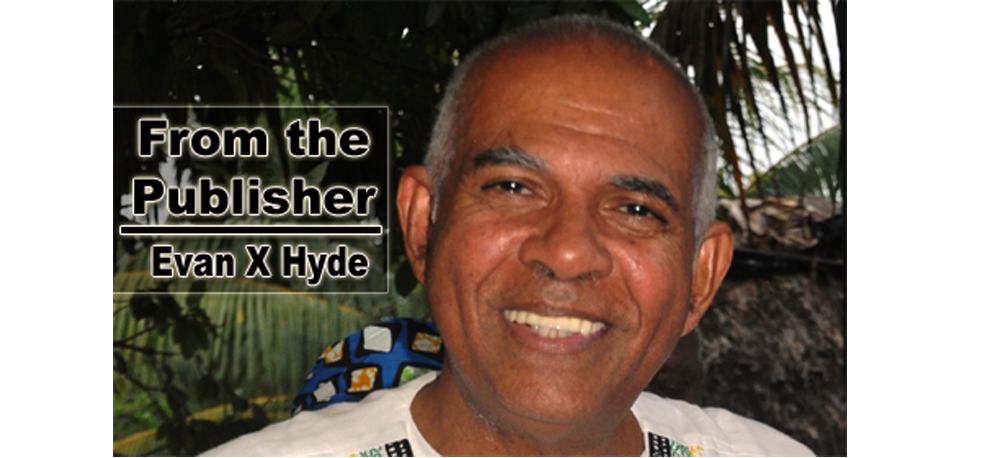I am your basic small-town boy. I guess the big problem is my airplane phobia, but I also suffer from something called social anxiety syndrome. But, we have to live with these issues.
When I left Belize in 1965 at the age of 18, I’d never been to Turneffe or Half Moon Caye. I didn’t know Placencia or Tobacco Caye. The world I lived in was a small one, surrounded by Stake Bank, Water Caye, Goff’s Caye, English Caye, Spanish Caye, Robinson Point, and so on. It was, looking back, a very small world, but I was totally in love with it.
When I was being processed to go to school in the U.S., an American official at the Consulate told me I would have to wait two years before I applied for American citizenship. I was a little puzzled, because I was so happy living in Belize. Innocence, baby.
On planet earth there are many tribes on different continents whom we refer to as “Indigenous” or “native.” Some of these have been exterminated from the planet because of the encroachment of civilization/development in the form of European invaders.
The French were some of the most successful European invaders, so it was ironic to me this week when Paris, which is hosting the 2024 Olympics, considered leaving out the swimming section of the triathlon competition because the level of e-coli pollution in the Seine River was too high.
The native peoples of the earth, such as the pre-European Plains Indians in North America and the tribes who live along the Amazon River in Brazil, basically lived on top of the earth. They ate the plants, fish, birds, and animals which they could see.
So-called development involves opening up the earth to dig out various metals and minerals which can be used to manufacture durable tools, deadly weapons, and so on. When Cortes and Pizarro (Spaniards) invaded Aztec Mexico and Inca Peru in 1519 and 1532, respectively, their soldiers were wielding steel swords and firing guns which could fire without exploding. The natives they slaughtered relied on bows and arrows, poison darts, and stuff like that.
All over the world, wherever the Europeans travelled, their weapons were superior, and they therefore conquered the Indigenous peoples.
The Europeans dug deeper and deeper into the earth to extract materials which were more and more suitable to manufacture tools and weapons, and build structures and house/yard implements. We say that Europe became developed. And most of us natives began to want to be like the ruling Europeans, so our brightest and most successful built homes and drove vehicles like the ones they saw our colonial and imperialist masters, our developed role models, using.
At some point the Europeans began to quarrel amongst themselves to secure and control the raw materials they needed from inside the earth to sustain their war machines and standards of industrial development. But Europe itself did not have a great deal of the strategic materials. These materials were mostly located in countries on continents other than Europe. A European nation like France, therefore, had to make sure, after they conquered and ruled these places militarily, and were eventually pressured to grant said places political independence, that the new native governments were under their control, so that France had basic or monopoly access to the strategic materials.
And this is why there are wars all over the “undeveloped” world. Native leaders, under the influence of European nations, become greedy and ruthless, rob their countries blind, and then native resistance movements spring up as the people fight to survive. That is why “everywhere is war.” The Europeans must have theirs.
The Europeans today are basically ignoring the impacts of the very dangerous climate change they have occasioned in the course of their development and their wars. But this short paper cannot take on this subject.
I was in second or third form at St. John’s College when Belgium was practically forced to grant independence to the so-called Belgian Congo, which is now Zaire. This is an absolutely incredible piece of creation where natural resources are concerned. But the people of the Congo are very poor. The Europeans and others have been quarrelling over the Congo’s resources from independence in 1960. And that is why its first prime minister, Patrice Lumumba was murdered. He wanted too much for the Congolese people.
The Katanga province is a small part of the Congo, but its wealth of natural resources is stunning. The Belgians controlled the leader of Katanga, Moise Tshombe, and used him to eliminate Lumumba.
In those days, whenever the government radio station of British Honduras discussed the Congo, in 1960 and 1961, they would refer to Katanga as the “mineral-rich” province. In preparing this paper, and, to repeat, it is a short one, I decided to go into my laptop and see what it is that is the wealth of Katanga. Remember, this is only a small part of the Congo, which is a very rich society where natural resources are concerned. But Katanga is simply out of sight. Yet, the people are poor. It is what it is.
Katanga — copper, cobalt, zinc, cassiterite (the chief sources of metallic tin), manganese, coal, silver, cadmium, germanium, gold, palladium, uranium and platinum.

